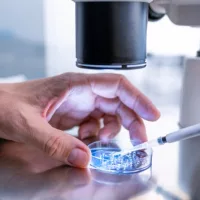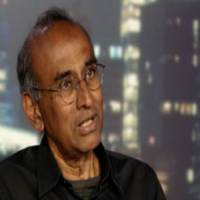
 UCLA Health(LOS ANGELES) — For years, Justin Cho’s family thought they simply had a happy kid who liked to laugh, even when nothing funny happened.
UCLA Health(LOS ANGELES) — For years, Justin Cho’s family thought they simply had a happy kid who liked to laugh, even when nothing funny happened.
“Ever since he was an infant he would giggle and it would be very short lived, anywhere between 2 to 5 seconds,” Justin’s father, Robert Cho, said on the UCLA Mattel Children’s Hospital website.
However, these chuckles didn’t mean Justin was laughing. His giggle fits were actually seizures and a sign he had a rare form of epilepsy called gelastic epilepsy. The family realized something was wrong when Justin’s condition progressed and he had a full-fledged traditional epileptic seizure.
At UCLA Mattel Children’s Hospital, doctors saw on an MRI scan that Justin, 9, had a benign mass, or lesion, in his brain. This lesion, called a hypothalamic hamartoma, can cause developmental delay, cognitive deterioration and psychiatric symptoms such as rage behaviors, according to the National Organization for Rare Disorders.
Dr. Aria Fallah, a pediatric neurosurgeon at UCLA Mattel Children’s Hospital who treated Justin, told ABC News that the area where the lesion occurred is deep within the brain and vital to keeping the body functioning normally.
“The challenges of treating it is that medications don’t usually work, and left untreated it can cause cognitive impairment,” Fallah said.
Hypothalamic hamartoma is usually present since birth, but most parents don’t realize anything is wrong until years later, Fallah explained.
“It usually takes a long time,” said Fallah. “Not many parents think giggling is problem, they think ‘Oh my child is happy.'”
In order to help Justin recover without doing open surgery on his brain, doctors instead were able to fix the lesion by using laproscopic tools, which is much less invasive than traditional surgery. The hypothalmus is deep in the brain and near the pituitary gland. Any injury to this area can mean a dangerous brain bleed or ongoing issues later with growth, hormones and other issues.
Once inside the brain, surgeons were able to destroy the lesion with an optic laser, minimizing damage to other vital tissue. A long thin rod was inserted into the brain, and through virtual reality maping, surgeons were able to get the tool to the mass and minimize the harm to other areas of the brain.
“It heats up the tissue to the point till it’s destroyed,” Fallah explained.
After the lesion is destroyed, no new seizures are expected unless another lesion forms. Since the surgery is much less invasive, it also means less recovery time for the patient.
“There’s essentially no recovery time,” Fallah explained to ABC News. “By the time he wakes up, he almost ready to leave.”
Now, six months after the surgery, Justin has had no new seizures, according to Fallah.
“Prior to this you’d see bursts of himself,” Fallah said. “Now he’s more of himself.”
Copyright © 2017, ABC Radio. All rights reserved.















